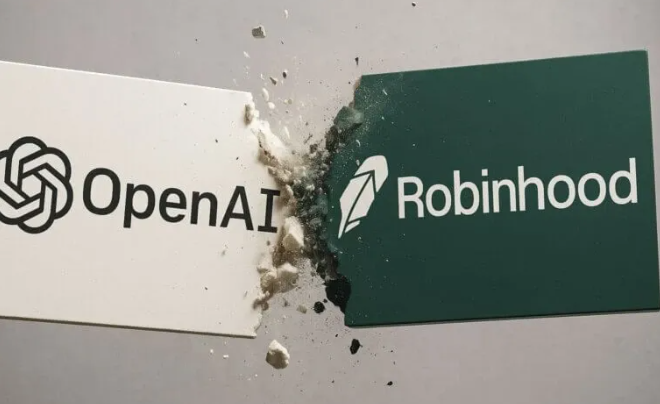
Web3 Lawyers Analyze: Robinhood’s Stock Tokens – Innovation or Overreach?
U.S. brokerage giant Robinhood recently launched ‘stock tokens’ linked to unlisted companies like OpenAI and SpaceX in Europe, once again thrusting real-world asset (RWA) tokenization into the spotlight. However, OpenAI quickly distanced itself, stating that ‘these tokens do not represent real equity.’ This ‘隔空喊话’ between a fintech giant and tech unicorns—Is it innovation breaking traditions, or overreach skirting regulations?
I. Background: Who is Robinhood?
Robinhood is a well-known U.S. fintech company famous for its ‘zero-commission stock trading app,’ targeting retail investors. Its revenue streams include interest income, margin trading fees, and selling order flow. To expand in Europe, Robinhood established a European hub in Lithuania, acquiring an A-category financial brokerage license and crypto asset service provider license from the Lithuanian central bank, enabling crypto-related operations across the EU Economic Area.
II. Event Focus: Tokenization of Unlisted Giants Sparks Controversy
In July 2025, Robinhood announced at the Cannes European Crypto Finance Summit: Launching ‘stock tokens’ for EU users, supporting 24/7 tokenized trading of over 200 U.S. stocks and ETFs. Most notably, it tokenized unlisted OpenAI and SpaceX stocks, even airdropping €5 worth of OpenAI and SpaceX tokens to EU users as promotion. The news sent Robinhood’s stock price surging.
But three days later, OpenAI’s official statement clarified:
– No partnership or endorsement with Robinhood
– Tokens do not represent OpenAI equity; equity transfers require company approval
– No authorization for such token issuance
III. Operational Model: Tokens ≠ Equity, SPV is Key
What exactly are these ‘stock tokens’?
Essentially, Robinhood holds minority stakes in target companies (e.g., OpenAI) through a Special Purpose Vehicle (SPV), then splits the SPV’s interests into tokens. The tokens users buy are actually ‘blockchain contracts tracking the SPV’s share value,’ separated from real equity by two layers:
1. User → Robinhood-issued tokens
2. Tokens → SPV’s holdings in the target company
Thus, token prices fluctuate with the target company’s share value in the SPV, but holders have no voting rights, dividends, resembling more a ‘valuation tracker’ than actual shareholders.
IV. Robinhood’s Strategy: Solving Retail Pain Points + Traffic Magnet
Why target unlisted giants? Robinhood aims to address three market pain points:
– High threshold for quality assets: OpenAI/SpaceX are unlisted, blocking retail participation in their growth
– High traditional private equity门槛: Average investors can’t access VC/PE
– Booming demand for innovative assets: Crypto, NFTs, and alternative assets are popular
Choosing star companies like OpenAI leverages their traffic to attract users, while airdropping tokens quickly boosts sign-ups and drives trading of other tokenized stocks.
V. Regulatory Shadow: Lithuanian Central Bank Launches Investigation
Despite holding EU licenses, Robinhood’s tokens face regulatory scrutiny:
– Lead regulator: Lithuanian central bank demands details on token structure, promotion to assess compliance
– Potential risks: If deemed ‘unauthorized securities,’ could face fines or business suspension
– U.S. market uncertainty: Currently EU-only; SEC’s stance will be critical if entering the U.S.
VI. Investors: Limited Gains, Significant Risks
Potential Gains
- Indirectly participate in unicorn valuation growth; profit by selling tokens if target company valuations rise
Key Risks
- Empty equity: No ownership, dividends, or voting rights; OpenAI disavows, leaving rights unprotected
- Volatile valuations: Unlisted company valuations are subjective, leading to potential剧烈 token price swings
- Counterparty risk: Dependent on Robinhood’s履约; operational issues could render tokens worthless
VII. Robinhood: Short-Term Gains, Long-Term Risks
Gains
- 10% stock price surge, positive market response to innovative products
- Potential user and trading volume spikes, solidifying European market position
Risks
- Market risk: OpenAI valuation drops could crash token prices, damaging user confidence
- Credit risk: As synthetic derivative issuer, questioned履约能力 may trigger trust crisis
- Compliance risk: Regulatory investigation outcomes may force整改 or fines
VIII. Fundamental Differences from Traditional RWA
Traditional RWA (e.g., tokenized real estate/bonds) typically directly anchors physical assets with original asset owner approval. Robinhood’s tokens, however:
– Lack authorization from OpenAI and other companies
– Indirectly linked via SPV, with two layers of equity separation
– Resemble ‘synthetic derivatives’ more than ‘direct asset tokenization’
IX. Expert View: Innovation or Regulatory Challenge?
Web3 legal teams argue:
– Positives: Attempts to break traditional financial barriers, offering new investment channels for retail, embodying Web3’s open spirit
– Concerns: Conflict between token borderlessness and stock regulatory territoriality may disrupt existing equity registration systems; unauthorized ‘shadow tokens’ could spark效仿,加剧 market chaos
For investors, clarity is key: These are not ‘unicorn equity’—just ‘valuation bets’ based on market consensus.
Read More《Web3律师深入剖析:Robinhood的股票代币,是创新还是越界》
This content is AI-generated and does not constitute investment advice. Please exercise your own rational judgment.
链上探索《Web3律师深入剖析:Robinhood的股票代币,是创新还是越界》
- Startup Commentary”Building LLMs: The Knowledge Graph Foundation Every AI Project Needs”
- Startup Commentary”The 17th Year of Tmall Double 11 and the New Map Rewritten by AI”
- Startup Commentary”How to Prepare Your Data for Artificial Intelligence”
- Startup Commentary”Small and Medium-sized Banks: “Cutting the Tail” in Loan Assistance”
- Startup Commentary”The Six AI Giants on Stage: AGI Is No Longer a “Future” Thing”




